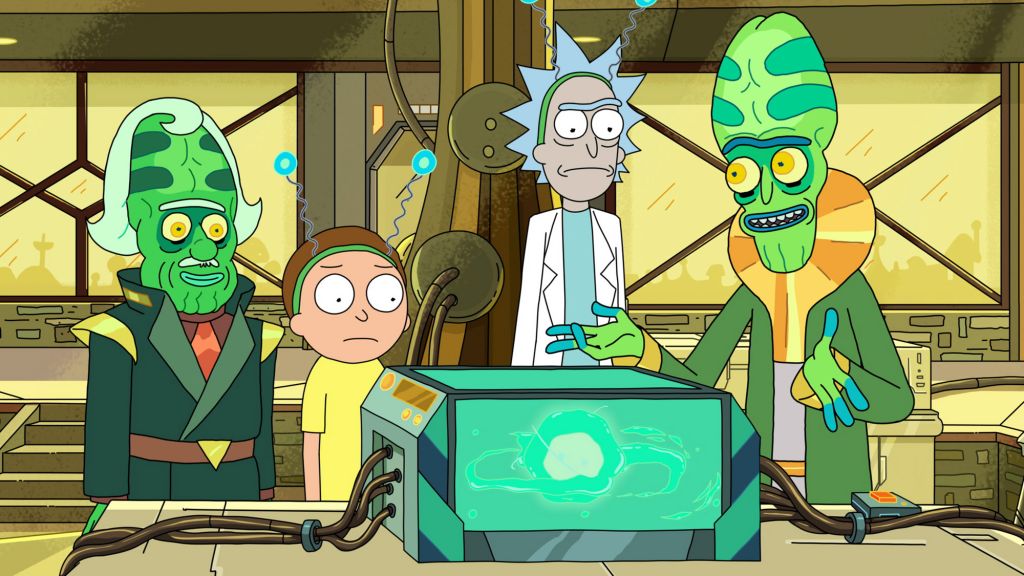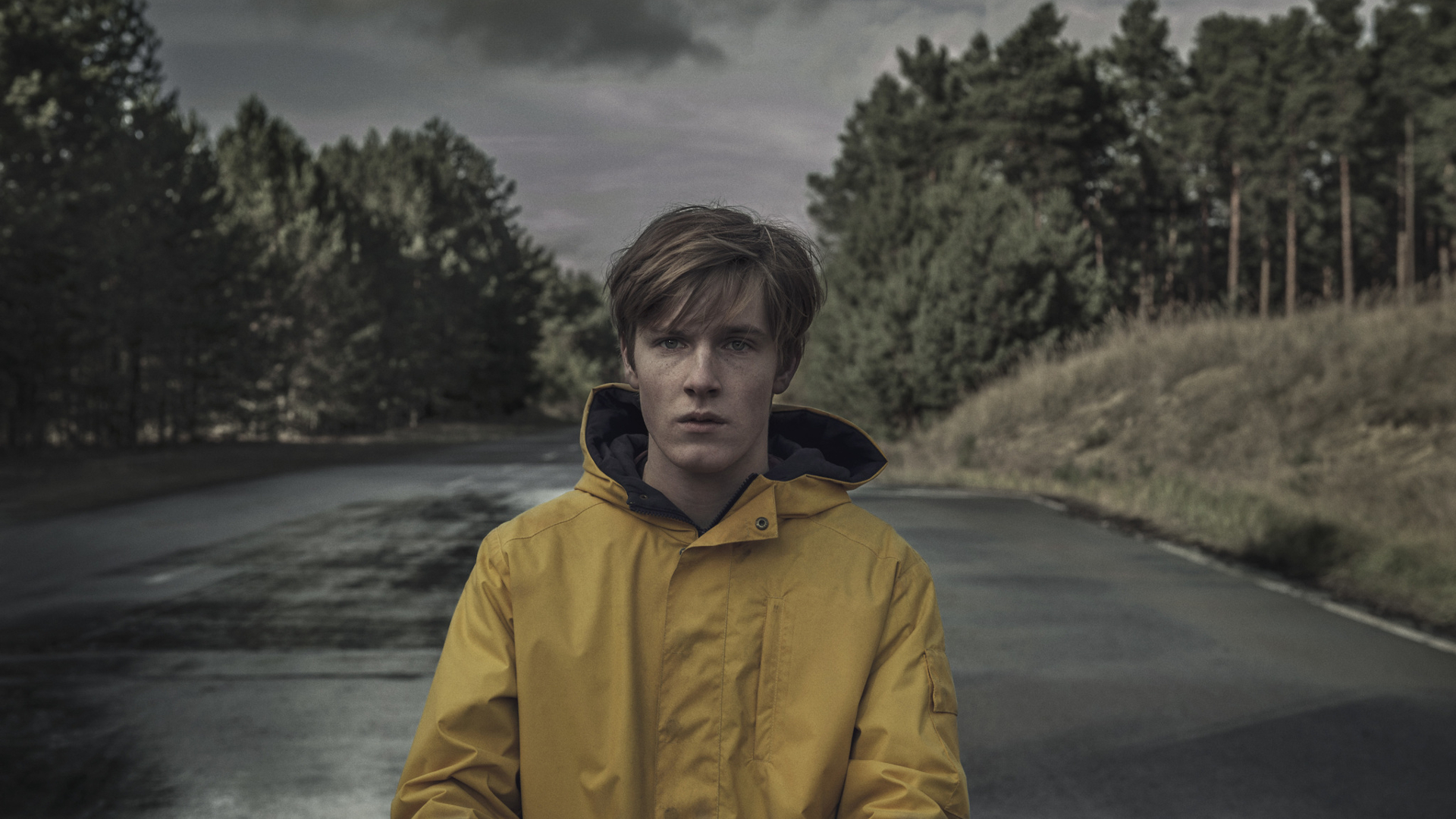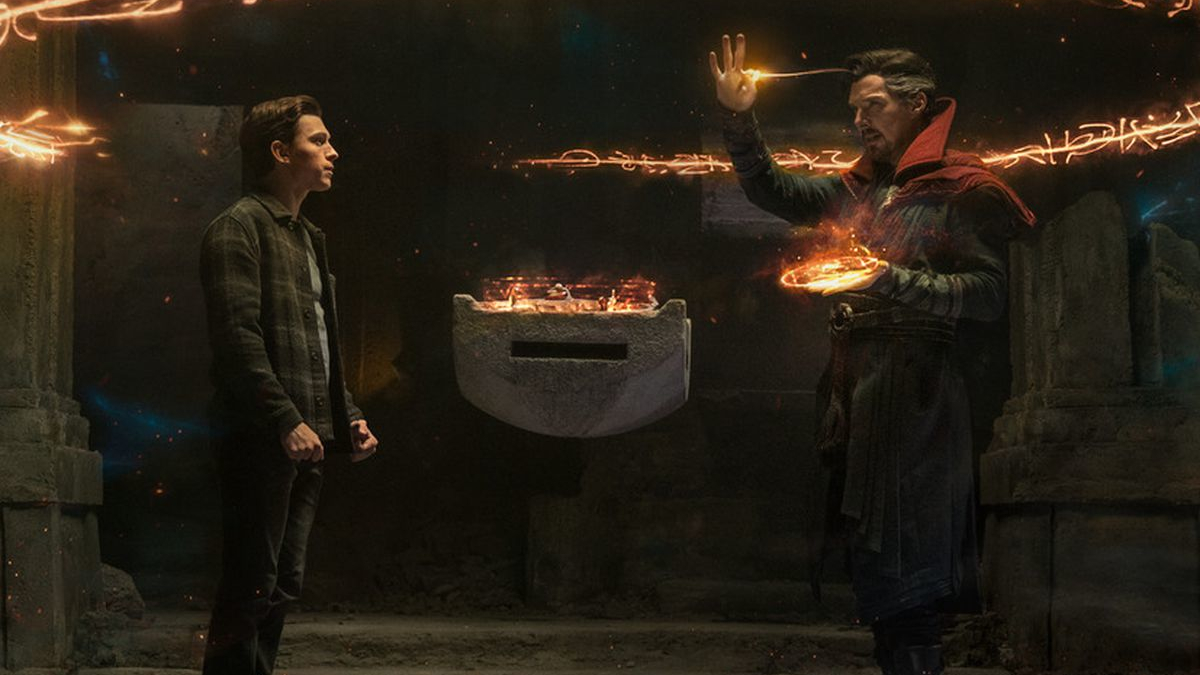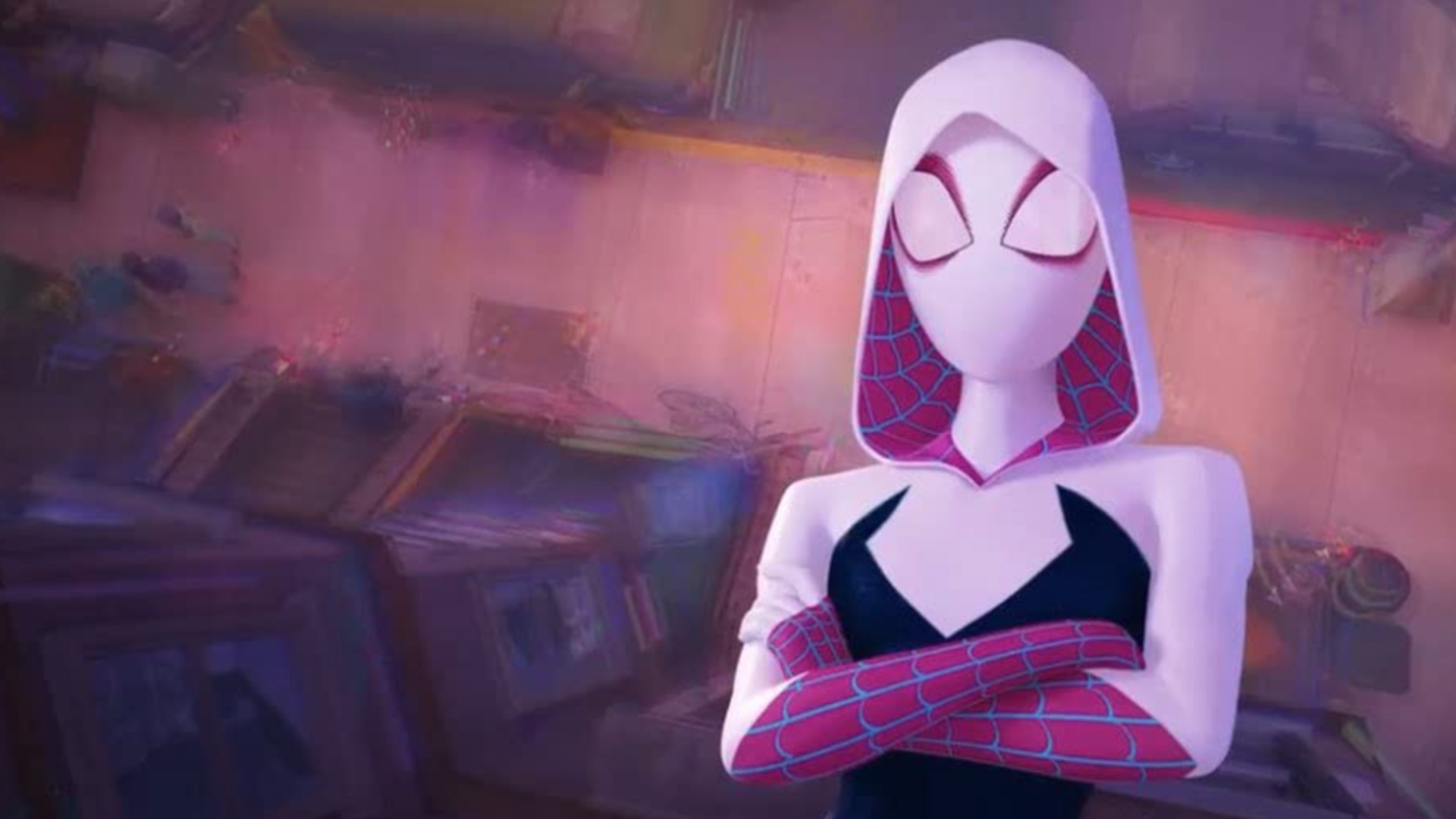Why is the multiverse so popular in sci-fi at the moment?
From Doctor Strange to Rick & Morty, everyone is diving into the multiverse at the moment, but why is it so popular?

“The Multiverse is a concept about which we know frighteningly little”, warns Doctor Strange in Spider-Man: No Way Home, but it is a concept that has become rather familiar on screen.
The Sorcerer Supreme’s next adventure will see him navigating the wonders and dangers of the Marvel multiverse, but he isn’t the only one exploring infinite realities - several of the movies in our upcoming sci-fi movies in 2022 guide are diving into the multiverse. Michelle Yeoh will be fighting throughout different universes in the A24 produced Everything Everywhere All At Once, before Miles Morales returns to travel across the multiverse in, err, Spider-Man: Across the Spider-Verse (Part One).
Exploring the multiverse in film or TV isn’t anything new (anyone remember 2001’s action flick The One starring Jet Li?), but it has gained popularity within the mainstream these last few years. The MCU has made it clear with Loki, Spider-Man: No Way Home and the upcoming Doctor Strange in the Multiverse of Madness that the multiverse will be a recurring theme moving forward, but outside of the superhero genre we’ve had adult animated shows and sci-fi flicks big and small exploring the concept too.
So, what has made the multiverse such a popular theme in sci-fi today? By breaking down different sci-fi films and shows, we can see how they’ve used the concept of the multiverse to tell entertaining, engaging stories that clearly resonated with audiences in every reality.
(Beware spoilers for Rick & Morty, Dark and all current Marvel Cinematic Universe films and shows.)

But first, what exactly is the multiverse? In short, it’s an idea suggesting that our vast universe isn’t the only one, with a potentially infinite number of universes out there that could each have their own laws of physics and civilizations. Although many physicists have debated over the years on the legitimacy of the multiverse concept, different theories surrounding the events of the Big Bang point towards the possibility of the multiverse.
One such idea, Inflation Theory, suggests that the universe didn’t exactly explode into existence but rapidly expanded outwards faster than the speed of light. Although the inflation of our known universe is thought to have ended some time ago, scientists argue that in the furthest reaches of the cosmos inflation is still happening and is breaking off into other universes that each inflate into even more universes.
Enter the Mortyverse
If there is one show that does an incredible job of capturing the wild possibilities of infinite universes, it would be the animated hit Rick & Morty. The show exploded into popularity back in 2013, following the inter-dimensional adventures of an alcoholic genius and his not-so-bright grandson. Thanks to a portal gun created by Rick, they come across alternate versions of themselves and worlds beyond our comprehension.
The show is mostly viewed as a sitcom comedy, utilizing the endless possibilities of the multiverse for gaining big laughs. In the episode ‘Rattlestar Ricklactica’, Morty unknowingly changes the course of history for a planet full of intelligent snakes and we’re treated to an extended backstory of their culture, technological advancements, and pivotal moments as a civilization; hilariously reflecting our own human history. Another episode reveals that Rick’s spaceship is powered by a whole microverse contained under the bonnet.

But the show runners don’t just use multiple realities for comedy. It was amusing watching Earth turn into an apocalyptic wasteland overrun with Cronenberg-esque monsters thanks to Rick and Morty’s reckless behavior in season one’s ‘Rick Potion #9’, but their actions have devastating consequences. The planet’s downfall is too great for Rick and Morty to rectify, so they travel to an alternate universe where that version of Rick and Morty perish, and take their place.
The issue is brought up when Morty reveals to his sister Summer that he isn’t her real brother, and that her actual brother is buried in the backyard. Morty uses the situation to make a point about how insignificant we are in the multiverse and that we should accept that and make the most out of our lives. It’s partially thanks to Rick and Morty’s blend of inter-dimensional comedy and tragedy that the multiverse concept became a popular theme in mainstream media.
Rick & Morty has given us five seasons so far, exploring scientific principles with surprising depth and respect, along with its trademark dark humor. We don't have a release date for season six yet, but we do know it's being worked on. keep an eye on our upcoming sci-fi TV shows guide for up to date information.
The darkest timeline

In 2017, Netflix released the mind-bending German drama Dark, following the supernatural relationship between four families. The many twists and turns are thanks to some head-scratching time travel shenanigans that (initially) spans across 1953 to 2019. The show gained popularity by offering audiences a breadcrumb trail in figuring out just what the hell is going on and a big part of that was by presenting huge cliffhangers. Season one had a finale that showed a future timeline but the season two finale ended on perhaps the show’s biggest cliffhanger moment.
As protagonist Jonas sits beside the body of his love, Martha, who was recently killed. Appearing out of nowhere is a different Martha who looks identical to the one dead on the floor. But when Jonas asks the new Martha what timeline she is from, she replies “The question is what world I am from?”. Now audiences had to figure out how alternate universes melded with multiple timelines whilst waiting for the next season. Teasing the possibility of the multiverse in an established fictional world works as a fantastic cliffhanger as the possibilities going forward are truly infinite.
The marvels of science
And talking about bringing the multiverse concept into unfolding stories, we finally get to the MCU. Similar to how Dark raised the stakes by introducing bigger concepts, the MCU brought in time travel antics in Avengers: Endgame before opening the multiverse floodgates with Loki. It seems the driving force in exploring the multiverse, however, is nostalgia.
Even with Avengers: Endgame tying up arcs for numerous characters, having different realities means Marvel can bring back any fan-favorite character or actor as alternate versions of themselves.

Spider-Man: No Way Home is the most obvious example to use, bringing back previous Spider-Men Andrew Garfield and Toby Maguire in their web-slinging roles alongside current Spider-Man Tom Holland. Whilst the star-studded cameos don’t detract from the narrative, it doesn’t add much to it either. It’s a nostalgia play for super-fans in the theatre on opening night but it fails to leave a lasting impression with the story at heart.
With infinite possibilities that come with infinite universes, it’s a shame that Marvel is set on exploring the realities of what is and has been, instead of what could be. We got a taste of this with What If…?, but we’d like to see Marvel be braver with the mainline MCU’s use of the multiverse.
One thing is for certain though - all the time travel and alternative universes are making it a nightmare for us to keep our Marvel movies in chronological order guide up to date. Won't someone please think of the content creators? In the meantime, check out our Marvel streaming guide to see how you can watch everything the MCU has to offer.

There is one superhero movie, however, that makes the most out of the multiverse theme with dazzling results. Spider-Man: Into the Spider-Verse changed western animation for the better with its story of Miles Morales becoming Spider-Man with the help of other Spider-People. The multiverse concept clearly influences the different aspects of the film. Each alternate Spider-Person has their own art style and even their own animation.
A lot of the comedy plays on the absurdity of multiple universes colliding (Spider-Ham is hilariously genius). Hardcore Spider-Man fans are rewarded with plenty of Easter eggs and meaningful references across the Spider-Verse. Most importantly though, the film uses the multiverse to tell an engaging story. Young Miles learns how to not just be Spider-Man, but his version of Spider-Man thanks to the other Spider-People. It’s directly tied to the theme of what it means to be Spider-Man, and how we’re all in some way a Spider-Person.
It’s no wonder that the idea of the multiverse is so popular within the sci-fi genre when there are infinite storytelling opportunities. Even with the vast scale of the concept, however, we’re already seeing common trends within these stories - particularly in the use of cameos and references. But when films like Spider-Man: Into the Spider-Verse come around, it proves how powerful and exciting the multiverse can be. With infinite universes, comes infinite possibilities.
Join our Space Forums to keep talking space on the latest missions, night sky and more! And if you have a news tip, correction or comment, let us know at: community@space.com.
Get the Space.com Newsletter
Breaking space news, the latest updates on rocket launches, skywatching events and more!
Gavin is a Freelance Writer and Gaming Editor for Filmhounds Magazine. With a particular interest in film, TV and gaming, his work can be found within outlets such as Flip Screen, New Game+ and JumpCut PLAY. On top of that, Gavin is an aspiring screenwriter and is currently taking part in a Games Writing Mentorship based in East Anglia. If he’s not writing about queer people in horror stories, he’ll be writing about sad people facing existential dilemmas in space.










